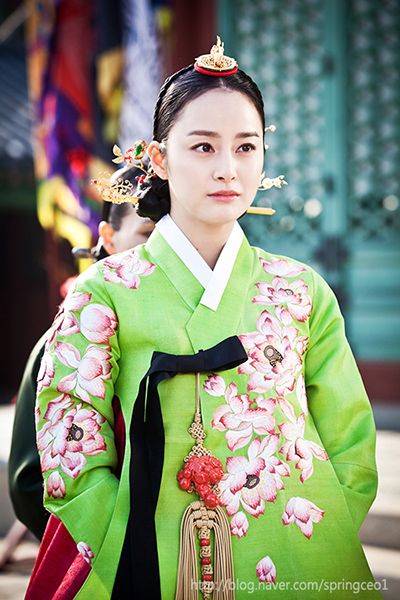JOJ - THE JOSEON FASHION SHOW 01
THE JOSEON FASHION SHOW
-
JEWELRY & ORNAMENTS SPECIAL EDITION PART 1
During Joseon Dynasty, wearing accessories were permitted to the upper class and women in common household were allowed to wear them only during wedding ceremonies although there were exceptions to royal concubines. Confucian philosophy in Joseon Dynasty has prohibited the use of accessories such as necklaces, earrings and bracelets which were worn from earlier periods and henceforth lead norigae pendants and hair ornaments to be favored over those other accessories.

1) THE NORIGAE

Norigae pendant is one of traditional women's accessories in Korea which was later favored over necklaces, bracelets and rings in Joseon Dynasty and matured into distinct types. It enhances the beauty of hanbok, the traditional Korean costume, by providing a visual focal point in the look and by achieving harmony with the color and the line. The traditional Korean sense of aesthetic can be discovered through the beauty of norigae pendant which brings unity of the whole. Not only was it worn as pure ornament but also as a functional tool for everyday usage such as needle case, acupuncture needle case, pouch and etc. The individuality of its shape and pattern expresses one's many wishes of happiness, hope and life guiding motto from ancestral wisdom.

It was typically worn on the outer coat skirt (goreum) or waist of the skirt. Its purpose was originally to be used as a good luck charm that brought eternal youth, wealth, or many sons to the family. It then began to be used as a fashionable accessory.





Each set of norigae is classified as a one-part (danjak), a two-part (ijak) or a three-part (samjak). For an instance, the number three has a symbolic meaning of heaven, earth and humanity and its significance is also applied to the three layers of a bride’s undergarment during her wedding ceremony. For this reason, women wore three pendants together as a samjak norigae pendant during ceremonial events at the royal court and noble households.

In general norigae consists of four part, a clip known as ttidon (the top ring of a norigae), a knot known as maedeup, the paemul (main ornament with jewel) and sul (fringe or tassel), however, there are pendants with more parts.

The motifs for the main ornament can be animals shapes (duck as a symbol of love, butterfly as a symbol of happiness marriage, tiger as a symbol of good fortune, haetae etc),plants shapes (grape, pomegranate as a symbol of properous family, acorn, peach as a symbol of eternal youth, lotus flower as a symbol of fertility etc), auspicious characters(longevity, fortune, happy etc), religious symbols (Buddha’s hand, Bhuddist Mala Beads),others (pouch, large bellsm arrow-pot, stone lamp, bells as a symbol of enlightenment and harmony, etc).




Source: wikipedia.com, http://mymariamargareta.blogspot.com/2012/02/norigae.html, https://sites.google.com/site/7th12thcenturyasianfashion/korean/korean-norigae, http://www.koreanessentials.com/portfolio/norigae-ornament-adding-unusual-quality-to-hanbok-traditional-dress/, http://www.bonamuseum.com, http://www.musenet.or.kr,www.minwhee.co.kr